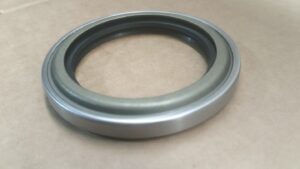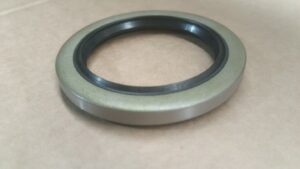Table of Contents
ToggleWhat Is the Function of a Seal?
A seal is a vital component in mechanical systems, designed to perform three critical roles: retaining lubricants, excluding contaminants, and maintaining pressure differentials. These functions ensure the reliability, efficiency, and longevity of machinery, from automotive engines to industrial pumps. Below is a comprehensive breakdown of how seals work, their types, and their importance across systems.


Core Functions of a Seal
- Retain Lubricants
- Purpose: Prevent the leakage of oils, greases, or other fluids essential for lubrication.
- Mechanism: Seals maintain a lubricant film between moving parts to minimize friction and wear.
- Example: Crankshaft seals keep engine oil within the crankcase, ensuring bearings and pistons remain lubricated.
- Exclude Contaminants
- Purpose: Block external particles (dirt, dust, water) from entering sensitive components.
- Mechanism: Seals create a physical barrier between the environment and internal systems.
- Example: Wheel hub seals prevent road debris from contaminating wheel bearings.
- Maintain Pressure Differentials
- Purpose: Regulate internal pressure in systems like hydraulics or turbochargers.
- Mechanism: Seals prevent pressure loss or overpressure that could damage components.
- Example: Transmission seals ensure fluid pressure remains stable for smooth gear shifts.
How Seals Work
Seals achieve their functions through a combination of design and material engineering:
- Elastomer Lip(s): A flexible rubber lip (made of NBR, Viton®, or other compounds) presses against a rotating shaft. A garter spring or metal insert ensures consistent contact despite wear.
- Metal/Composite Case: The outer casing (steel, PTFE-coated, etc.) is press-fitted into the housing bore, providing static sealing.
- Dynamic vs. Static Sealing:
- Dynamic sealing occurs at the rotating interface (e.g., shaft and lip).
- Static sealing occurs between the seal casing and housing.
Types of Seals and Their Applications
| Seal Type | Design | Primary Use |
| Lip Seals | Spring-loaded rubber lips | Crankshafts, axles, wheel hubs |
| O-rings | Elastic loops (round cross-section) | Fuel injectors, coolant lines, A/C systems |
| Gaskets | Flat sheets (rubber, metal) | Engine valve covers, oil pans |
| Cassette Seals | Housed cartridge units | Heavy-duty transmissions, differentials |
| Mechanical Seals | Precision-engineered faces | High-pressure pumps, industrial systems |
Importance in Automotive Systems
- Engine:
- Crankshaft seals retain oil for lubrication.
- Camshaft seals ensure oil flows to valve train components.
- Drivetrain:
- Transmission seals maintain fluid integrity for gear lubrication.
- Differential seals protect gears from contamination.
- Wheels:
- Hub seals safeguard bearings from dirt and moisture.
- Ancillary Systems:
- Power steering seals preserve hydraulic pressure.
- A/C compressor seals prevent refrigerant leaks.
Consequences of Seal Failure
A compromised seal can lead to:
- Fluid Loss: Low oil levels cause overheating and component damage (e.g., engine seizure).
- Contamination Ingress: Abrasive particles accelerate wear in bearings and gears.
- Pressure Loss: Reduced efficiency in hydraulic or turbocharged systems.
Example: A leaking rear main crankshaft seal risks oil starvation, leading to catastrophic engine failure.
Material Innovations Enhancing Seal Performance
- Viton® (FKM): Resists high temperatures and chemicals (e.g., turbocharger seals).
- PTFE (Teflon®): Low friction and durability for high-speed applications.
- Silicone: Flexible in extreme temperatures (e.g., coolant system seals).
Maintenance Best Practices
- Regular Inspections: Check for leaks, cracks, or wear during routine servicing.
- Timely Replacement: Replace worn seals to prevent system-wide damage.
- Proper Installation: Ensure seals are fitted correctly to avoid premature failure.
Beyond Automotive: Applications in Other Industries
- Aerospace: Seals in jet engines withstand extreme pressures and temperatures.
- Industrial Machinery: Pump seals prevent fluid leakage in chemical processing.
- HVAC Systems: O-rings maintain refrigerant integrity in air conditioners.
Summary
The primary function of a seal is to retain lubricants, exclude contaminants, and regulate pressure in mechanical systems. In automobiles, seals are indispensable for protecting engines, transmissions, and wheel assemblies. Advanced materials like Viton® and PTFE enhance performance in demanding environments, while proper maintenance ensures longevity. From everyday cars to industrial giants, seals play a silent yet crucial role in keeping machinery operational and efficient.



Leave A Comment